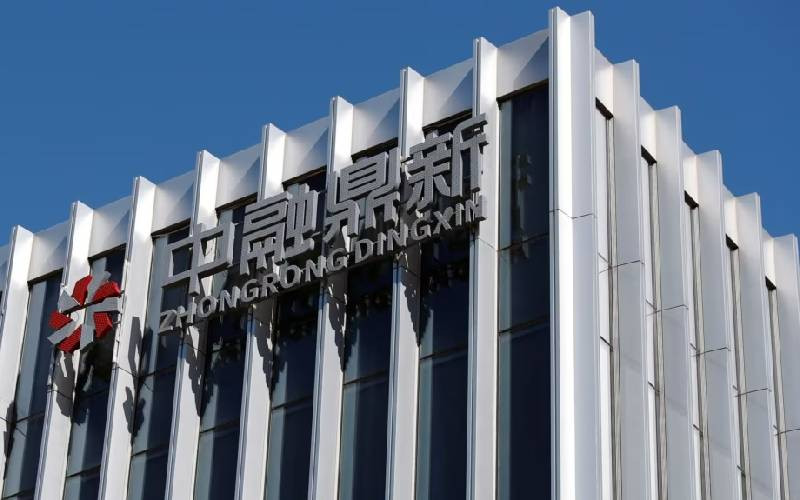
A growing crisis in China’s “shadow banking” sector is threatening further damage to an economy reeling from multiple problems, even as a new report questions the ability of the government in Beijing to come to the rescue via fiscal stimulus.
On Wednesday, Bloomberg News reported that Chinese authorities have enlisted the Citic Trust Co., a subsidiary of the state-owned China Construction Bank, to assess the state of Zhongrong International Trust Co. When Citic was asked to make a similar assessment of a large asset manager in 2021, it was the prelude to a massive bailout package meant to prevent the firm’s collapse.
A major player in the country’s $2.9 trillion trust industry, Zhongrong is a subsidiary of the Zhongzhi Enterprise Group. Zhongrong holds nearly $90 billion in investors’ assets, and earlier this month it failed to make payments on multiple investment vehicles, triggering concern about its solvency.
Concern about the financial condition of the country’s trust sector comes at a time when Beijing is struggling to maintain economic growth. With economists speculating that some sort of fiscal stimulus package may be necessary, a new analysis by the U.S.-based research firm Rhodium Group, which has expertise in the Chinese economy, suggests that the central government’s ability to spend its way out of the crisis may be more constrained than many believe.
‘Shadow banking’
The term “shadow banking” refers to a sector of the Chinese economy that funnels money into a wide range of investments, across multiple sectors of the economy, outside of the traditional pipeline of bank-based lending.
Far from existing in the shadows, the companies are large and widely known in China. In a country where the official interest rate on bank deposits remains less than 1.5%, trust companies have for years offered Chinese investors significantly higher returns on their savings than bank deposits, in many cases offering the suggestion that investors would be protected from potential loss of capital.
High rates of return were relatively easy for trusts to deliver during the years in which the Chinese economy was growing at double-digit rates but have become much more difficult to achieve in recent years. A significant portion of the assets invested through the trust sector were directed to the Chinese real estate market, which has moved from crisis to crisis in recent years.
In a recent analysis, Goldman Sachs estimated that losses across the Chinese trust sector could reach $38 billion.
Difficult to hide
Many of the products that Zhongrong sells to investors are meant to deliver a steady stream of income, with some delivering payouts as frequently as once per month. This makes a serious crisis at the firm exceptionally difficult to disguise.
As of this week, analysts have identified dozens of investment products sold by the company that have missed payments to their beneficiaries. The company is also reported to have halted redemptions on some of its short-term investment vehicles, making it difficult or impossible for worried investors to cash out.
A major factor in the crisis appears to be the struggles of the real estate industry. Last year, Zhongrong placed a major bet on the sector, pushing funds into a number of troubled housing products in the expectation of a rebound in the market that has not materialized. An estimated 11% of the company’s assets under management are invested in real estate ventures.
Lack of ‘fiscal space’
The government in Beijing has been taking measures in recent months meant to boost the economy, including recent rule changes meant to bolster a sagging stock market. However, some economists have speculated that some sort of fiscal stimulus package may ultimately be necessary.
In the past, China has used large government investments in infrastructure and industry to drive economic growth. However, a new analysis from the Rhodium Group suggests that the capacity of the central government to deliver such relief may be more limited than it has been in the past.
While there is a widespread belief that low levels of government debt mean that China’s central government has the “fiscal space” to deliver significant stimulus, Rhodiuim Group research analysts Rogan Quinn and Logan Wright argue that structural issues to do with the way the government collects revenue are more limiting than most realize.
“In reality, China’s fiscal capacity is highly constrained,” they wrote in their study. “The entire fiscal system is structured around revenues from investment-led growth, which is ending. Tax revenues continue dropping relative to the size of the economy, and the property market’s decline has hit land sales revenues as well.”
They added, “Actual fiscal deficits, including both central and local government budgets, are around 6-7% of GDP, and are likely to stay in this range, or rise. Persistent deficits of that size can be financed internally, of course. But they will limit not only Beijing’s ambitions for strategic spending, but also the use of fiscal stimulus to support growth in the years ahead.”